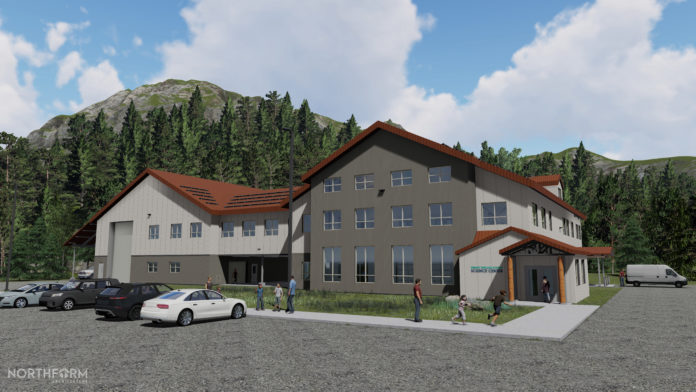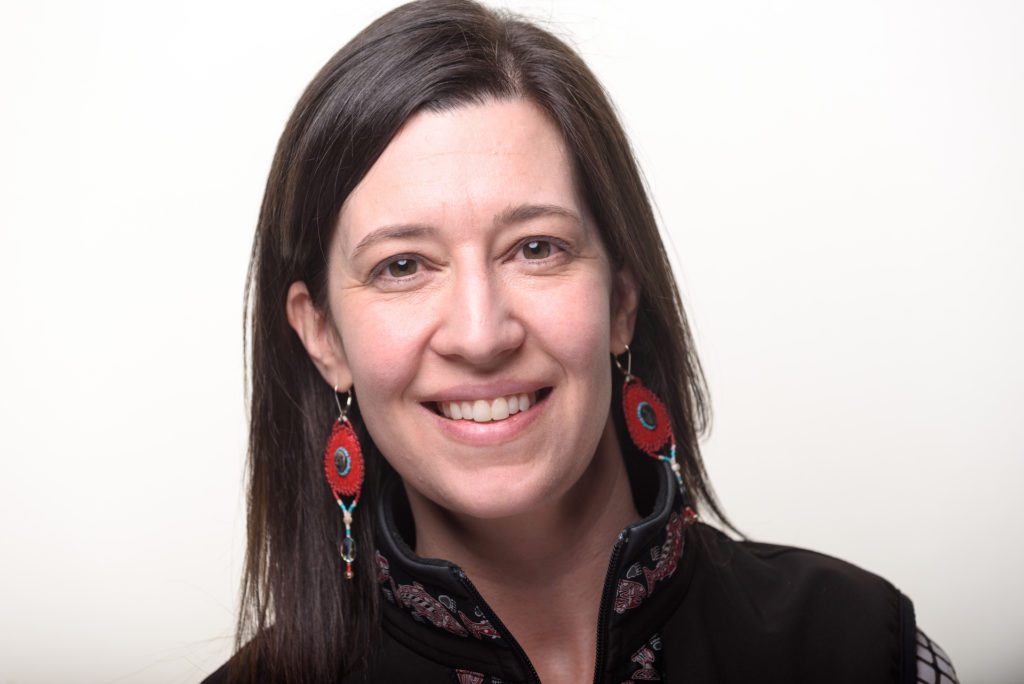
The Prince William Sound Science Center’s new facility is a sprawling compound full of opportunity and wonder. With the newer building’s ribbon cutting last year, 2023 looks to be a great year for the center.
The science center’s new 5-acre waterfront campus — with advanced laboratories, a forthcoming running seawater system and plans for a science residence and dormitory — is a once-in-a-generation opportunity, according to an excerpt from the PWSSC website. The 20,000-square-foot facility will make the science center and Alaska more competitive for national-level research funding, support high-wage jobs, generate new STE(A)M education opportunities and advance industries such as mariculture, aquaculture and commercial fishing.
The site for the new facility is adjacent to a salmon bearing stream, tidally influenced lagoons, a shoreline accessible to anglers and boaters and more than 120 acres of upland property whose future uses are restricted to conservation through an easement. The new campus and conservation easement constitute a world-class research, education, recreation and conservation district that will benefit current and future generations,” the website said.

The nonprofit employs a stellar and dedicated staff: from researchers such as oceanographer Rob Campbell, PhD, who captains the PWSSC research vessel, bird and fisheries ecology experts, oil spill technology and response, education specialists, administration staff and president and CEO, Katrina Hoffman, M.S. About three decades after the PWSSC came to fruition, Hoffman brought her impressive background to the innovative organization.
Hoffman participated in a science foundation fellowship as an undergraduate, working at a marine lab in Washington State before joining the first intern cohort with the Monterey Bay Aquarium Research Institute.
“Some of the most wonderful marine scientists in the world get to work out of there. When my internship ended, I had a lot of skills that could be put to use: lab skills and oceanography sampling skills,” said Hoffman. She embarked on research cruises (including a federal research vessel with NOAA) that were up to 30 days long, at locations off the coast of the Golden State and the Equatorial Pacific.
Her journey continued to take her to great places, from teaching marine biology on Catalina Island and teaching high school marine science, oceanography and marine biology in Manhattan Beach, to training middle school and high school science teachers at Occidental College.
“I helped them understand how to help kids plan and carry out scientific research projects … That was really awesome. I loved that job,” Hoffman said.
Hoffman catapulted into graduate school at the University of Washington after that, where she received her master’s degree.
“I had a great experience there … I was surrounded by a lot of people like me who were wanting to dedicate their lives to better understanding the ocean and helping the world better understand the oceans, make decisions as citizens that benefit the oceans,” said Hoffman.
Before moving to Cordova, Hoffman worked as a marine advisory program agent for Washington Sea Grant for many years.
Hoffman moved to town after accepting a position at PWSSC in the fall of 2011, just before Cordova received almost 28 feet of snow during snow-pocalypse, an event that made national headlines. It was a bit of a challenging first winter, but Hoffman stuck it out. Fast forward to 2023, she is enjoying her position and life in the Last Frontier.
The new PWSSC facility is one of the bigger projects happening under Hoffman’s leadership. The new compound, Hoffman shared, will allow for a larger scale operation for research, education and partner involvement. On the horizon, exciting new developments in ocean powered energy systems and an interactive touch tank will be unveiled at the PWSSC.
“This new facility is a really great platform for us to expand the type of way we do our work, and also invite more partners to do good work in the region,” Hoffman said. She added that one of the biggest changes in functionality is the running seawater system under construction. Once finished, the system will allow the center to do research and other activities, like mariculture industry support and growing out kelp. The science center will also have a touch tank for education and community engagement, according to Hoffman.
“We will also be the third building in Alaska that is primarily heated by energy from the ocean. That is consistent with our mission: which is to improve community resilience through understanding and sustainable use through ecosystems.”
The seawater system and seawater heat pump are a “demonstration project” of sorts, shared Hoffman, in keeping money in the community.
“We will then be buying power to run the pumps that are produced locally, and the power purchases keep local people employed and keep money circulating in the community,” said Hoffman. The system works by drawing down heat from the ocean to the heat pump system, returning cooler water to the ocean, and heating the building.
“It will be the lowest cost increase heat source of any heat source that you could have, over the lifetime of the building. That is really exciting,” Hoffman said.
The PWSCC has no lack of education events on the horizon. January is chock full of fun happenings, including a Tuesday night talk series, kicking off with Raven Cunningham of the Chugach Regional Resources Commission on Jan. 17 about Whales and Porpoises.
For more information on the PWSSC, visit the website at https://pwssc.org/





